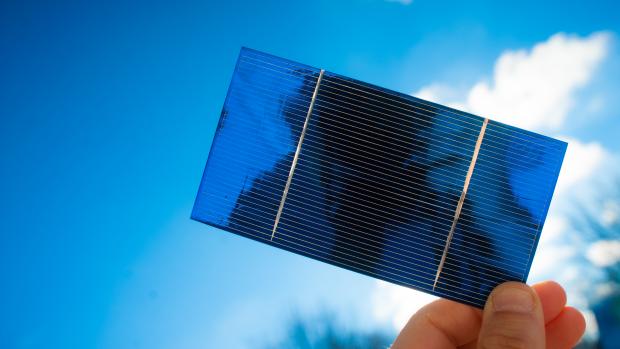NYU Tandon-based team advances in the American Made Solar Challenge

The United States has a long history of innovation in solar manufacturing, but as the technology has matured, American production has not grown at the same rate as in other countries. Today, the U.S. contributes only 1% to the total global shipments, which are largely silicon based.
NYU Tandon doctoral students Ed Sartor and Jason Lipton, along with post-doctoral researcher Jason A. Röhr, all members of Professor Andre Taylor’s Transformative Materials and Devices Lab, aim to help bring the global market back to the U.S.
Nanospray, the team formed by the labmates, recently won a $50,000 prize and advanced to the second round of the American Made Solar Challenge, a contest sponsored by the U.S. Department of Energy and the National Renewable Energy Laboratory (NREL).
NanoSpray addresses a core issue plaguing some of the largest players the American solar industry: although the raw materials needed to manufacture cadmium telluride (CdTe) solar panels are cheaper than their crystalline silicon counterparts, processing multiple layers under vacuum drives up the cost to manufacture them. The trio’s solution: use materials that can be processed directly from solution onto CdTe, side-stepping the much more cost-intensive vacuum fabrication setup, resulting in panels that are a bargain on a per-watt basis.
The innovative NanoSpray process involves applying highly conductive, water-dispersible, metallic 2D materials via a less-energy-intensive spray coater with low capital costs and few maintenance requirements. The system is not only more affordable but cleaner and more sustainable than traditional methods of CdTe manufacturing.
The American Made Solar Challenge is divided into three sections: Ready! (for the ideation stage), Set! (for the proof-of-concept stage), and Go! (for refined prototype). As competitors progress through the three contests, they receive more financial support and resources, accelerating the cycles of learning from months to weeks and reducing the overall time it takes to bring their products to the market.
“Governments and industries worldwide are racing to development cheaper solar technologies that will allow us to move away from fossil fuels and put the brakes on climate change,” said Sartor. “We are excited that the U.S. DOE and NREL are giving us an opportunity to contribute to American efforts to develop inexpensive solar power, a sector of the economy that we hope American manufacturers can recapture through innovation.”
“It is gratifying to see that the team’s knowledge and expertise in device physics, materials science, and prototyping has been recognized by the U.S. Department of Energy and NREL,” said Taylor. “I have no doubt that they will excel in the proof-of-concept stage of the competition and that NanoSpray could have a significant impact on the photovoltaic industry.”
In early April, the U.S. Department of Energy (DOE) Solar Energy Technologies Office (SETO) named Nanospray as one of only 10 teams selected to advance to the final stage of the American-Made Solar Prize Round 4. They will receive $100,000 in cash plus $75,000 in vouchers to redeem at DOE National Laboratories and other partner facilities.




